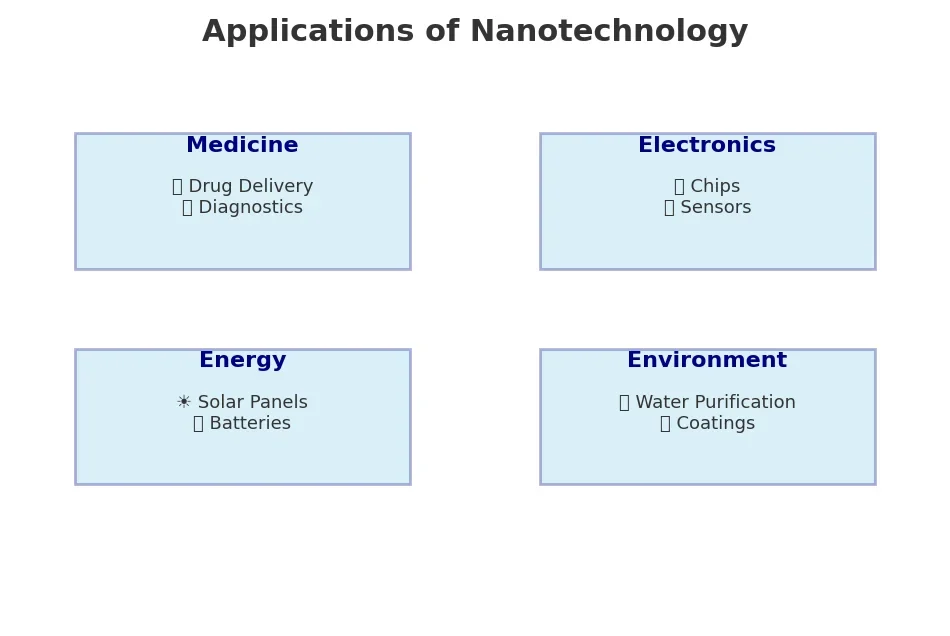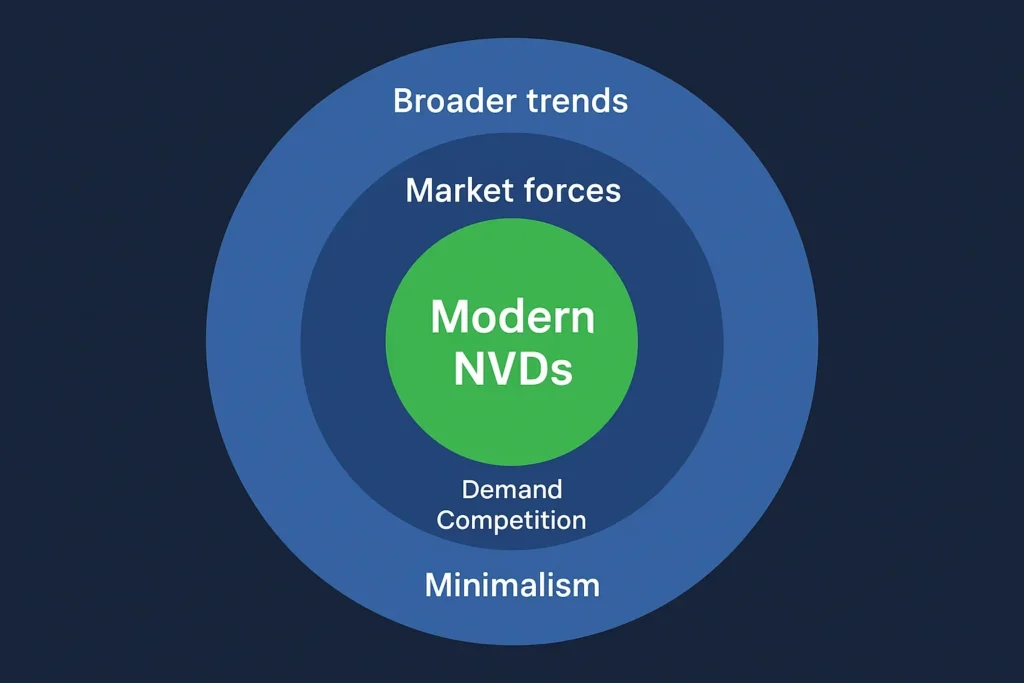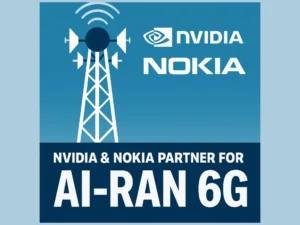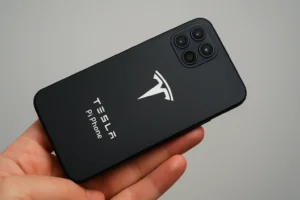In the 21st century, there are practically no areas of activity that do not use NV devices. This became possible due to decades of active development of various technologies. It is this circumstance that transformed bulky, ineffective, and difficult-to-use nighttime optics into modern devices that even a child can easily handle. At each stage of this process, technologies were influenced by factors that stimulate their development and help improve NVDs. What factors have this effect today? Read this article to the end, and you will get the answer to your question.
| Factor | Brief Description | Impact on NVD Development |
|---|---|---|
| Technological Progress | Advancements in sensors, materials, and electronics | Lighter, stronger, and more efficient NVDs |
| Growing Demand | Civilian and military use is expanding rapidly | Mass production and more R&D investment |
| Striving for Minimalism | Desire for compact, portable devices | Head-worn and handheld NV devices are becoming standard |
| Nanotechnology | Improved materials for photocathodes and sensors | Increased image clarity and light sensitivity |
| Image Processing Algorithms | Use of AI and software to enhance night images | Reduced noise, better recognition in low light |
| Combined Technologies | Fusion of night vision and thermal imaging | Better performance in diverse conditions |
| Competitive Market | More manufacturers are pushing innovation | Faster advancement and more affordable devices |
Technological progress
At all times, scientific and technological progress have been catalysts for the emergence of various technologies. It provided people with the foundation for creating more advanced devices that were significantly more advanced than their predecessors in all respects. In the NV optics segment, such an influence was most noticeable. The discovery of the image intensifier tube, microchannel plate, new photocathodes, and CMOS matrix all activated the evolution of technologies, turning NVDs into more efficient equipment. Today, the situation remains unchanged. The development of technologies in NV optics still depends on technical progress, and its influence on this process is only increasing. Every year, new materials emerge that enable devices to become lighter, stronger, and more durable. At the same time, more efficient and inexpensive digital sensors are being invented, making night optics accessible to everyone, and so on.
Growth in demand for night vision devices

People have always dreamed of learning to see in the dark, usually at night. Therefore, as soon as NV devices were invented, mankind had unlimited opportunities for using the dark time of day. Gradually, nighttime optics developed and became more accessible. Not only the military, but also civilians began to use it, simplifying the performance of a vast number of tasks. All of these events increased the demand for such equipment. Its manufacturers began to seek new opportunities to produce more units of high-quality products, which led to the activation of the technology development process. Models equipped with advanced developments were manufactured in less time, allowing companies to meet the ever-growing demand. At the same time, the devices became more efficient, expanding the range of applications for this equipment and increasing its demand even further.
Striving for minimalism
In the 1940s, the German army began using dark-vision devices that were so bulky that they were transported to the battlefield in specially designed trucks. This created many problems, so the main task of developers for many years to come was to reduce the size of night optics. Gradually, manufacturers of such equipment managed to achieve progress, resulting in night vision devices becoming more compact and easier to use. However, the desire for minimalism did not stop the further reduction in the dimensions of nighttime optics. To achieve these goals, it was necessary to improve modern technologies. Their development made it possible to obtain more compact components that became an equivalent replacement for previously used parts. Reducing the size of individual design elements has made it possible today to open access to NV devices that, due to their compactness, can be worn on the head and held for an extended period with one hand. And this is far from the end of the story. Currently, the process of technological development is directly related to the desire to make nighttime optics even smaller. Therefore, another breakthrough in this direction should be expected soon.
Development of nanotechnology

In the 1970s of the last century, people began to use the term “nanotechnology.” At that time, few ordinary people understood it, but today everyone is familiar with it. Nanotechnology has rapidly infiltrated the lives of every person and brought about significant changes. They also influenced the technologies used in NVDs. Thanks to them, photocathodes made of new materials with optimal characteristics for this design element began to be used in devices. Nanotechnology also pushed developers of night optics to create improved sensors with increased sensitivity. These sensors made NV equipment more effective even in deplorable lighting conditions. Today, the influence of nanotechnology on the entire segment remains enormous, and there is no doubt that in the future, its development will become the key to creating more advanced NVDs.
Emergence of advanced image processing algorithms
For a long time, the primary issue with all these devices was the quality of the formed image. Noise, graininess, highlights, and other defects constantly appeared on it. All of them worsened the perception of the picture and interfered with distinguishing small details. However, the situation was corrected. With the advent of advanced image processing algorithms, NV optics has not only learned to create, but also to improve, the quality of the image. Artificial intelligence plays a huge role in this process. It is gradually being introduced into the operation of new equipment and helps to eliminate various image defects. It is also involved in the process of recognizing objects that fall into the field of view of the device. Today, the use of advanced image processing algorithms is becoming a key factor in the evolution of technologies on NVDs. They force manufacturers of dark vision optics to constantly introduce new developments that can further improve the quality of the formed picture.
A combination of different technologies
For many years, people have compared night vision vs thermal vision. Each proved the effectiveness of one of these technologies and provided many arguments. This continued until engineers found a way to combine the capabilities of both technologies. This procedure had a significant impact on the evolution of night optics. With the advent of devices that work effectively in various lighting conditions, users can now choose the best option for each specific situation. This opened up new horizons and expanded the range of applications of NV equipment. Additionally, the combination served as the basis for the evolution of thermal overlay technology. It enables the superimposition of a thermal image over a picture obtained with an NV device, providing maximum information content.
Growth of competition

Initially, NVDs were made by only a few companies. However, as the popularity of such products grew, the number of manufacturers increased. Today, there are so many of them that they have begun to compete with each other for the attention of customers. This procedure has significantly influenced the rise of NV optics technologies. In an effort to stay ahead of competitors and offer customers something special, manufacturers of optical night devices began introducing their own developments and implementing dozens of new ideas. Thanks to this, the models produced began to improve quickly and continue this path today.
The rise of modern technologies on NVDs is a consequence of the influence of many factors. Technical progress, increased demand, the introduction of nanotechnology, and improvements in image processing algorithms, among other factors, have led to the rapid evolution of NV optics in terms of appearance, design, characteristics, and available functionality. This procedure is actively continuing today. The devices produced every year are becoming increasingly advanced, capable of performing a vast number of tasks.











